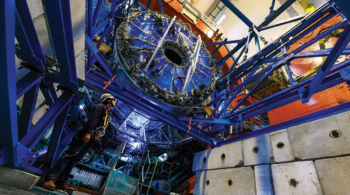 Read article 'HERMES heralds insight into nucleon spin'
Read article 'HERMES heralds insight into nucleon spin'
HERMES heralds insight into nucleon spin
In which direction do quarks point? The HERMES experiment using DESY's HERA electron ring and an ingenious system to control the spin of the electron beam is poised to reveal new insights into the...











